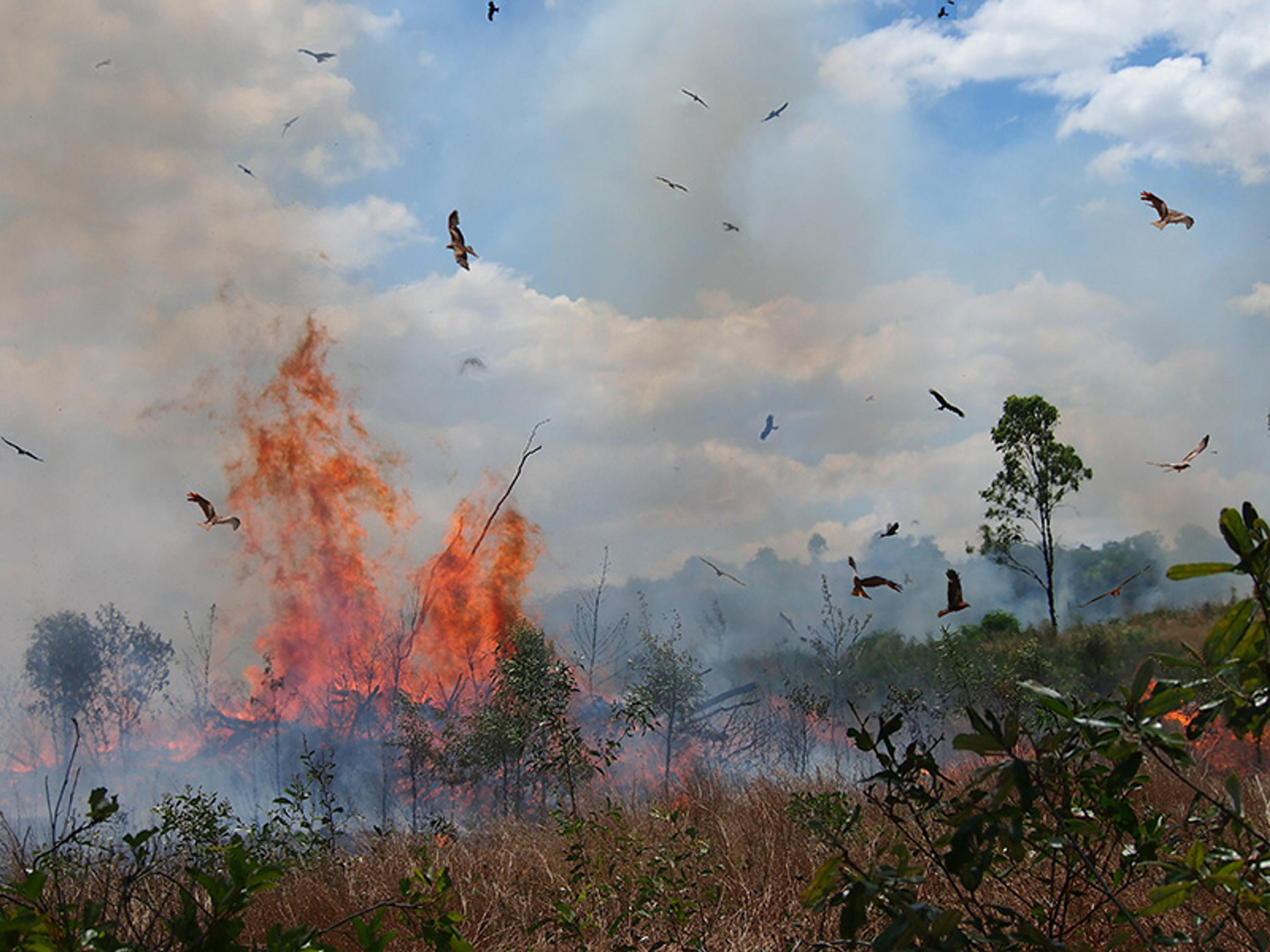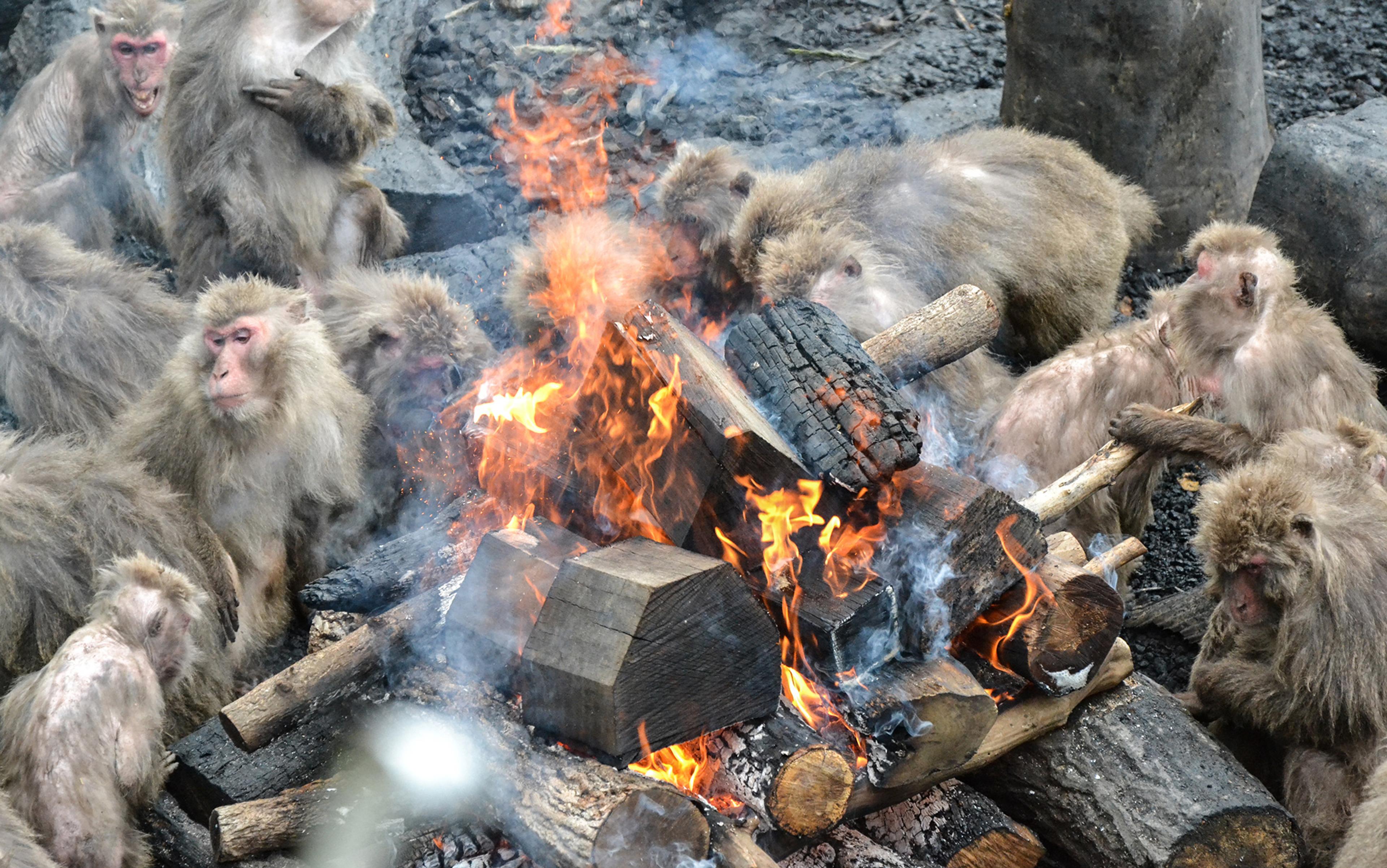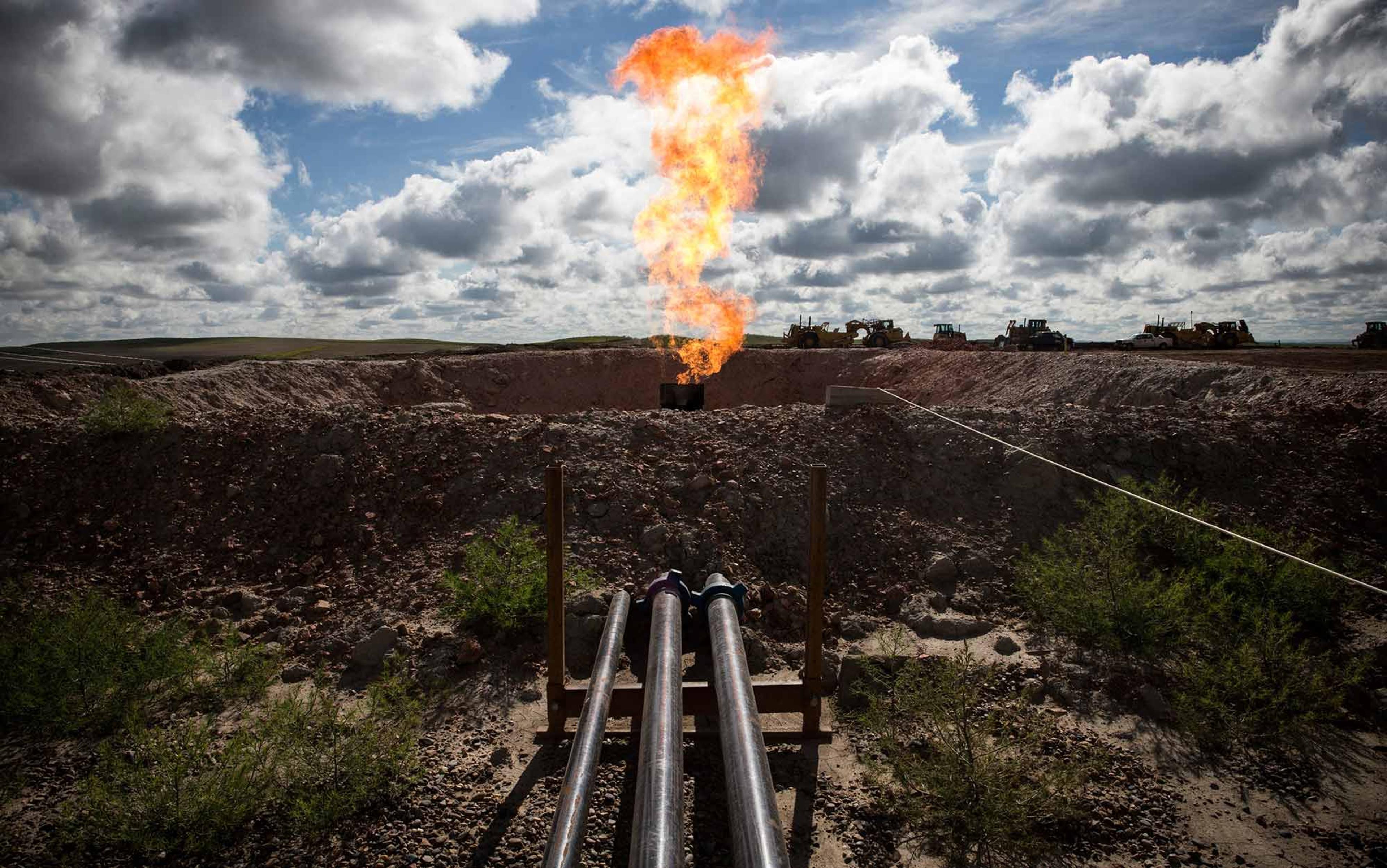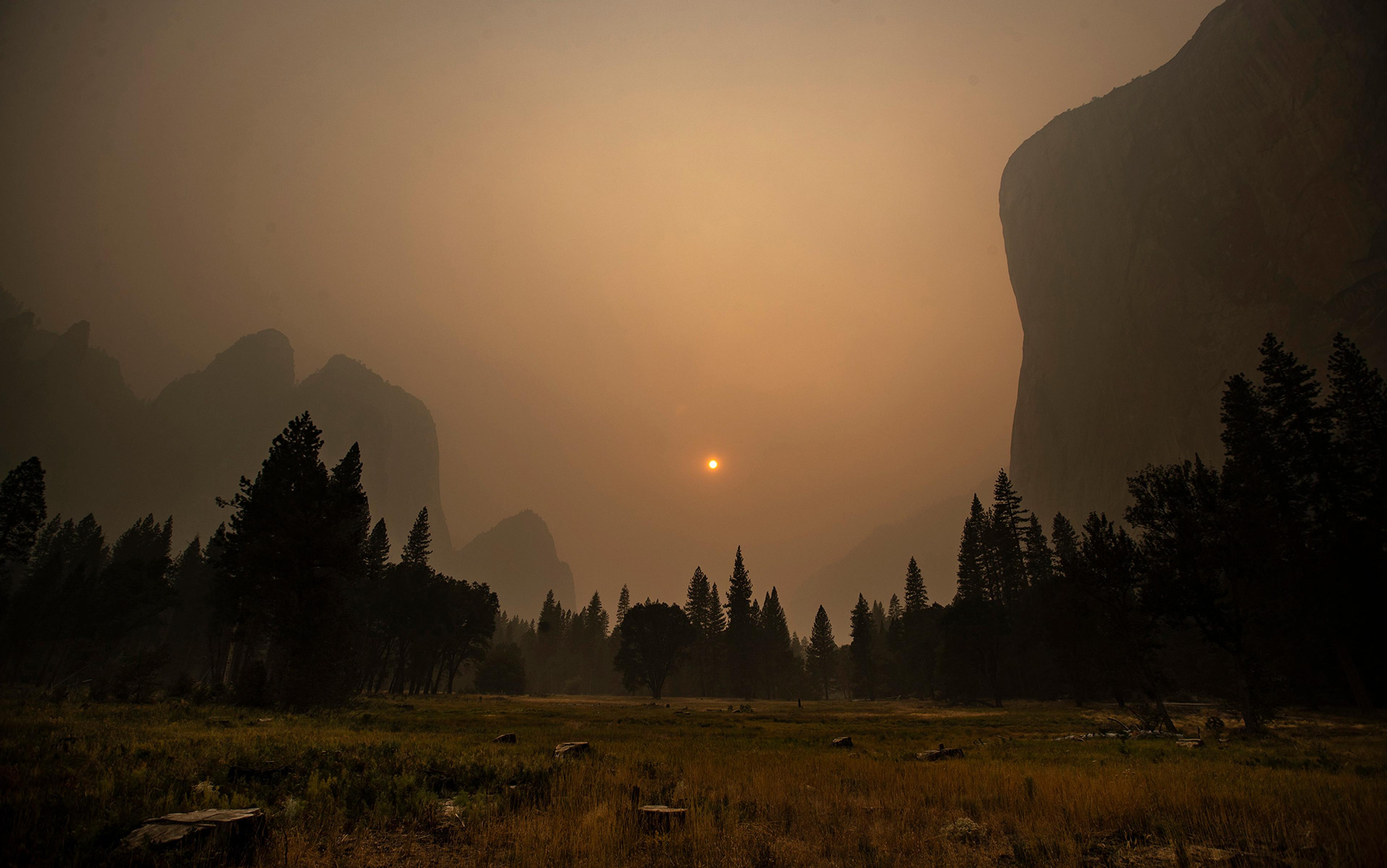In the beginning, there was no fire. People were cold, lean and hungry. Like baboons, they gathered food and ate it raw. But one day, a group of children began playing with arrows by twirling them against a log, and were surprised to find that the tips became hot and smoke appeared. Sparks jumped and landed on the dry grass nearby, making it smoulder. The kids added more grass to the flames and, as the bonfire grew, it began to whip the air, making a wo-wo-wo-wo sound like a whirlwind. The elders arrived and became angry, because this magic had consumed all the grass and trees. In their hunger, the villagers tried eating the charred bananas left in the ashes – and were surprised to find how sweet they were. People began making fire deliberately to toast bananas, with the same delightful result. Visitors to the region wondered why the food here tasted so sweet, and were told they could buy the secret in exchange for a goat.
This is the story of how all lands learned to use wowo, according to the Chaga people of eastern Africa. Origin stories about fire from around the world involve foragers discovering the hidden spirit of fire in trees, heroes transforming into animals to trick selfish fire-keepers, or Promethean thieves stealing fire from deities. The Chaga myth is more plausible, capturing the transformative role of fire in human evolution and culture. The earliest evidence for human use of fire dates back to eastern Africa 1.5 million years ago, long before the Chaga say that people cultivated bananas and domesticated goats. Wildfires would have been a frequent occurrence for these hominins, a group that encompasses all species in our lineage closer to us than chimpanzees. Indeed, whoever and whenever and wherever they were, the people that first controlled fire were probably already accustomed to it consuming the savannah vegetation on its own.
Yet it seems humans weren’t alone in our use of fire. Evidence is mounting that other animals are capable of pyrocognition, the behavioural and cognitive abilities required to harness the potential of fire. This means that examining the way nonhuman animals interact with and live alongside fire can help us shed light on how our long-extinct ancestors managed this dangerous phenomenon, and how it went on to shape the creatures we are today.
The wowo myth illustrates the most important function of fire for humans: cooking. It’s such an essential and universal behaviour that we could be called Homo coquens – the cooking human. Cooking is a central aspect of all cultures, and has been for a long time. It’s the primary function of fire in hunter-gatherer societies, followed by warmth, ritual, processing materials, light, preserving food, and protecting against parasites and predators.
‘Cooking made us human,’ as the biological anthropologist Richard Wrangham put it in his book Catching Fire (2010). Cooking is a way to predigest food, increase calorie uptake and eliminate dangerous pathogens. Starchy foods break down and become soft when cooked, making them sweeter and easier to chew and digest. For these reasons alone, hominins could have preferred to eat cooked food without understanding the physiological benefits. Great apes, which can serve as partial models for extinct hominins, also prefer cooked carrots, potatoes and meat over their raw counterparts. By contrast, people on raw food diets are often malnourished and underweight, even when eating energy-rich foods shipped from all around the world. Our ancestors didn’t have access to such luxuries, and therefore would have been even less healthy on a purely raw diet.
Our bodies and brains have evolved in response to a cooked diet, as well as earlier increases in meat consumption and the use of tools to cut up food. Unlike the baboons from the wowo myth, our brains have tripled in size over the past 1.5 million years, which wouldn’t have been possible without cooking. Our teeth also shrank, and our bite became too weak to crack and grind hard foods. We now spend on average only 4.7 per cent of the day eating – 10 times less than if we ate only raw food. There wouldn’t be enough time in the day to forage for sufficient calories if we relied on a raw diet.
Our relationship to fire has changed human evolution in other ways. Hominins might have noticed how smoke would deter and kill the parasites living in their camps, and used it to fumigate sleeping sites or their own skin, or to stun bees so as to retrieve their honey. Using fire also carried the risk of smoke inhalation, especially in enclosed spaces such as caves, and could have increased airway infections and infant mortality. As a result, our genome shows traces of adaptations that work to counteract the effect of pollutants such as smoke.
The behavioural and cognitive factors that sparked fire use – pyrocognition – remain a mystery
Fire seems to have made its mark on our internal clocks too, which are abnormal among our relatives. We sleep relatively little and our alertness peaks in early evening, a time when most of our primate kin are fast asleep. This pattern could have been driven by consistent exposure to firelight in the evenings. Nightly fires would have also offered greater protection against predators and parasites, which meant we could stay on the ground instead of sleeping in trees; the warmth also allowed our ancestors to become increasingly hairless to improve our long-distance running. Intriguingly, this aligns with the ancient Greek myth of Prometheus (‘Forethought’), who bestowed fire to humankind because his lazy brother Epimetheus (‘Afterthought’) fumbled the task of creating humans by leaving them awfully hairless and defenceless. Spending less time sleeping, foraging and eating meant more time for socialising, too. For instance, the Ju/’hoan Bushmen of southern Africa spend evenings singing, dancing and storytelling, wakeful in the firelight when all around is dark.
Across ethnography, archaeology, physiology and ecology, more and more research is unlocking where, when and why the control of fire emerged. But crucial how questions remain unanswered. How did hominins overcome their fear of fire? Did they play with it before learning its practical applications? How did they discover the benefits of fire after seeing it destroy landscapes? How did they avoid getting injured? How did fire change their habits? How did they learn to cook?
These behavioural and cognitive factors that sparked fire use – pyrocognition – remain a mystery. Fossils and other remains give us lots of information about behaviours such as movement and feeding, and tell us a lot about the brain and the senses, but say less about cognitive skills. Surprisingly little is known about the pyrocognition of modern humans. Studies have shown that the age at which children learn to manage fire, and its main purposes, vary widely across cultures. Many people in the West assume that people of all ages are fascinated by fire and enjoy looking at it. Indeed, Swedes mainly have fireplaces for the cosy atmosphere, while Americans who watch and listen to fire report feeling relaxed, with an accompanying drop in blood pressure. But this affinity to fire also has a dark side. Fascination and experience with fire are the strongest predictors of whether someone will become an arsonist. Accidental and intentional fires combined cause many injuries and deaths, and much material damage every year; in 2012, fire was responsible for 5 per cent of all reported injury-related deaths worldwide.
However, the intrigue and appeal of fire seems to be restricted to those who are WEIRD (or Western, educated, industrialised, rich and democratic people). In contrast, children from hunter-gatherer societies are typically exposed to fire at a younger age, experience it more often, and are instructed less. They reach adult-like competence before 10 years old, and show little interest in fire other than for its practical utility.
But attitudes to fire don’t account for how it is controlled and understood. Anatomically modern humans, with their large brains and adaptations for cooked food, are not ideal analogues for the first hominins who began to use fire. Instead, we might look to the behaviour of animals, particularly primates, which share many cognitive, ecological, social and morphological similarities with extinct hominins. This cross-species approach has examined the shared roots of hominin abilities such as language, culture, sociality, and tool use – but very little has been done on fire-related behaviour. Examining and teasing apart the response of animals and humans to fire can therefore inform our understanding of how extinct hominins behaved towards fire – and eventually learned to use, control, and create it.
Animals can respond to fire in a number of ways: they avoid it; they associate with its aftermath; they get used to it (‘habituate’); or they interact with it. Fire is fast and destructive, so why don’t all animals avoid it? In fact, some gain advantages from associating with burned landscapes. For instance, wolves benefit from the reduced vegetation cover and increased abundance of prey, which are attracted to new sprouts taking root. Habituation, on the other hand, means the more animals are exposed to fire, the more normally they behave when close to it. Savannah chimpanzees and vervet monkeys frequently experience wildfires, for example, and travel, groom and forage close to it while remaining calm. Wildfires open up the landscape, which makes it easier to forage, travel and spot predators.
The few kinds of animals that interact with fire provide clues about how our ancestors might have done it. In the middle of the 20th century, when chimpanzees living in zoos were often given cigarettes, they would light the correct end with burning matches, avoid combustible materials, extinguish cigarettes in wet patches, remove cloth that had been set alight, and use fruit peels to handle hot residues. They also used sticks to inspect fire and rake objects from it. After observing humans, an orangutan even attempted to light a stick by holding a burning one against it, and put fuel and sticks on glowing embers.

Black kites and whistling kites hunting in and around a controlled brushfire, Mount Etna Caves National Park, central Queensland, Australia. Photo courtesy Wikimedia
These anecdotal observations suggest that great apes can at least grasp the ‘dos’ and ‘don’ts’ of fire. Some birds can, too. Black kites and other Australian raptors follow smoke trails and gather near wildfires in large numbers to hunt escaping insects, reptiles and mammals. Some of them even pick up burning embers and drop them elsewhere, which might increase their chances of catching a meal by causing animals to flee. The most complex fire-related behaviour in the wild, in fact, comes not from our primate cousins, but from our distant feathered relatives, with whom we share a last common ancestor some 320 million years ago. The unique behaviour of these ‘firehawks’ is featured in traditional Indigenous stories, which raises the possibility that humans learned to manage landscapes with fire by watching birds.
The crows’ behaviour mirrors the hypothesis that hominins played with fire before they mastered it
While primates are better models for ourselves and our extinct hominin kin, complex cognition can manifest in distant relatives such as birds if they face apparently similar challenges. Crows sometimes ‘bathe’ in hot chimney smoke, hide burning candles in leaf litter, press smouldering sticks against their plumage, and light matches by striking them with their beaks. Aside from humans, New Caledonian crows are the only creatures that use tools fashioned as hooks, employing them to extract grubs from plants. Crows possess extraordinary technical prowess and densely packed brains despite being far removed from us and other primates.
Our recent paper describes how New Caledonian crows placed objects against hot heat lamps. The objects became singed, charred or melted as a result. Similar to chimpanzees poking fire with sticks, these crows could grasp that investigating hot bulbs calls for objects deployed at a safe distance. This is what we call pericular tool use: tools to avoid touching or getting close to something potentially risky or dangerous (from the Latin ‘periculum’: danger, hazard, or risk). Earlier research has shown that New Caledonian crows and chimpanzees relied on tools to explore rubber snakes. The unusual effects of the heat on the affected tool might have made the crows even more keen to play and explore their possibilities. Although these are just a handful of observations, the crows’ behaviour mirrors the hypothesis that hominins explored and played with fire before they mastered it.
However, a better model for hominins’ first control of fire would be more naturalistic – rather than cigarettes or heat lamps – and involve primates, since they are our closest living relatives. We have recently started a study on a troop of Japanese macaques at the Japan Monkey Centre. In 1959, a typhoon hit the area and felled some trees in the outdoor macaque exhibit. Keepers set fire to the fallen trees to get heat in the winter season, and the macaques gathered around. Since then, bonfires are lit in their outdoor enclosure every winter. We don’t know much about the macaques’ response to the bonfire over the years, but they were described as calm and bold in 1962 and 1989. My project investigates their fire-related behaviour and pyrocognition in greater detail, with a particular focus on drawing parallels to how hominins might have started to interact with fire – long before the earliest archaeological evidence we have. For instance, we are examining whether the macaques use the fire for warmth, compete over access to it, relax near it, avoid smoke, and prefer to eat cooked food.
What do animals’ responses to fire reveal about the pyrocognition of our ancestors? Although pyrocognitive research is in its infancy, early studies and speculations offer some tantalising hints that call for further systematic study.
Many primates and birds of the crow family possess the general cognitive abilities we think would be required to use and control fire. These abilities include curiosity, fast learning, strong memory, behavioural flexibility, causal reasoning, inhibitory control, and planning. The roots of pyrocognition burrow deep in our species’ family tree, spreading wide across multiple branches, and bearing most fruit on the hominin twig. Some of these abilities were investigated in a study on chimpanzees that could exchange slices of raw potato for cooked ones with the researchers. Most chimpanzees were patient while waiting, including for foods they’d never encountered; they transported the raw slices, and exchanged them for cooked ones later on. While this is not evidence for cooking, it does show that chimpanzees have several of the required cognitive abilities.
It’s also striking that animals living in fire-prone environments do not necessarily avoid wildfires, and might actively associate with them. Perhaps our ancestors, too, travelled and foraged close to wildfires, much as savannah chimpanzees and vervet monkeys do today. They might have even found looking at a fire interesting and relaxing, just as WEIRD humans do, and could have eaten charcoal to aid their digestion. As with other limited resources, they might have competed over access to fire and charcoal.
People might have started off eating animals that died in hot springs
Like many other animals, our hominin forebears probably preferred the sweetness, softness and digestibility of cooked food long before being able to use or control fire. When they found tasty morsels in the aftermath of wildfires, they might have learned to travel to areas after they had been scorched. Later on, they might have been opportunistic cooks by placing food on wildfire or hot coals. An alternative scenario is found in an Australian myth that describes how a lightning storm caused a fire that cooked the carcasses of hunted kangaroos, which people discovered were tastier. Recent research from the Olduvai Gorge in eastern Africa provides evidence for the intriguing possibility that people might have started off eating animals that died in hot springs, before deliberately placing carcasses and other foods in the water to boil them.
Hominins might have learned about fire through careful exploration, tool use and play. Humans have made many different kinds of utensils and fireplace pokers throughout history, which illustrates the importance of pericular tools for controlling fire and cooking with it. That’s not unique to our lineage, as shown by the apes poking fire with twigs, crows pressing sticks against heat lamps, and raptors dropping burning branches to spread fire.
Finally, our ancestors probably used fire as a multifunctional resource, long before they could confidently control or make it. Hunter-gatherers rarely use fire for a single purpose, and groups that don’t know how to make it need to diligently preserve it. The Japanese macaques in our study might not be ideal analogous models because they live in climates very different to our early ancestors, and aren’t as closely related to us as are the great apes. Nonetheless, hominins had bigger brains than these macaques, with more neurons; they also lived longer, experienced wildfire more often, were more dextrous, and had more complex technical skills. It’s reasonable to assume that our ancestors would match – if not exceed – the diversity and complexity of the macaques’ fire-related behaviours, given similar opportunities and benefits.
Fire defines us as a species. Charles Darwin recognised this, claiming that fire was humanity’s second-greatest discovery, after language. Yet we haven’t devoted sufficient resources to examining the behaviour and cognition necessary to use and control it. We can get a complete picture only if we investigate the pyrocognition of humans and animals, alongside the established perspectives on the origins of fire. This is important not only for understanding the past, but also for managing the future. Fire is both a creative and a destructive force. While it plays a key role in many ecosystems, it also destroys much of the human and natural world. The Anthropocene could be called the Pyrocene as megafires become more common due to climate change and – paradoxically – excessive suppression of smaller fires that reduce the amount of available fuel. Fire as a result of human activity is a particular threat to animals living in environments where fire is rare. Among our conservation concerns, we need to learn how they respond and adapt to fire – and in some cases, as with the Australian raptors, even contribute to its spread. Only by navigating these risks can we safeguard a future that preserves the wonderful sides of wowo.






